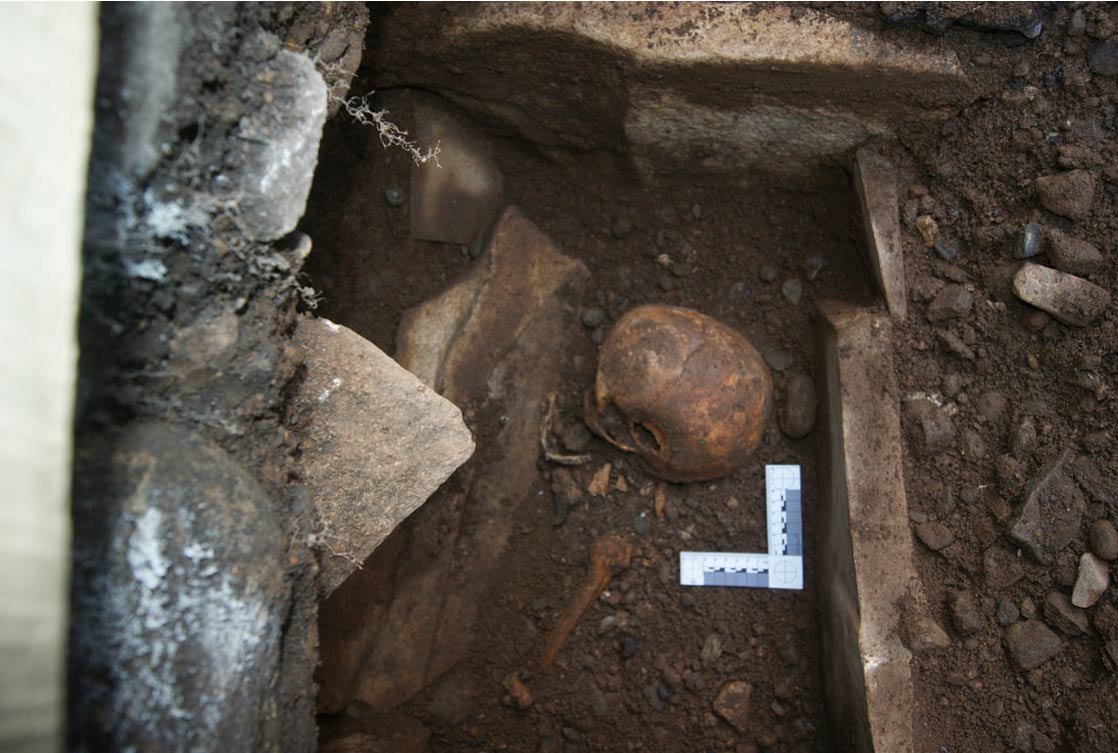Rare medieval skeletal remains excavated in Wales date to 13th century
The remains of a woman who died around the late 12 th or early 13 th century were excavated under the foundation a Welsh church that has been converted into a museum. The church was built over an older church in the 1820s.
Archaeologists found the skeleton of the woman, who they say died in her 60s, during reconstruction work on the museum. The church was St. Mary’s and now houses the Llŷn Maritime Museum in Nefyn, Gwennyd, Wales. They say it is rare to find any remains that old in North Wales because acidic soil disintegrates the bones.
MORE
- Excavations turn up medieval bones which may be a knight and his family
- Two ancient skeletons found holding hands in medieval chapel
“When archaeologists arrived to excavate the remains, they discovered the remains of complete cist and lintel grave (stone-lined grave),” says the museum’s website.
This is important as they are of a type which is characteristic of the early medieval period. Also uncovered were the remains four other unassociated burials which had been heavily disturbed by Victorian and later drainage works.”
The cist grave was located under the foundations of the rebuilt church in 1825-27, and as with other sites, the Victorians had disturbed a lot of the archaeology.
Catherine Rees of CR Archaeology told Ancient Origins,
There were other skeletons found during the works and these were not disturbed/excavated but given the material associated with them—coffin fittings, etc., they were all much later, Georgian/Victorian burials.

Archaeologists found a wall that may date back to an earlier priory, possibly to early medieval times. (CR Archaeology)
The archaeologists did radiocarbon dating of the woman’s skeleton unearthed from the cist and found she was buried in the early 13 th century. Archaeologists specializing in bones and skeletons confirmed she was in her 60s and in good health except for some arthritis.
“This lady would have lived through some exciting times in North Wales and in her later life she would have seen the unification of Gwynedd and much of mid and south Wales as well as the raise of Llywelyn ap Gruffudd (the last),” the museum says.
They will also analyze the woman’s teeth using isotopic testing of elements to determine her diet and where she was brought up. The museum says this is an important find because acidic soil in North Wales prevents preservation of bones, and the woman’s skeleton will give rare insight into people who lived in the area during the period.
MORE
- Researchers Explore Mysteries of Medieval Graffiti in England
- Discovery of Medieval Boat in England Hailed ‘Rare and Important’
Rees said such stone-lined graves have been assumed to be medieval, but because skeletons have disintegrated in the acidic soil it has been hard to obtain a date for the graves. The intact bones of this 13 th century woman are evidence that such graves are in fact medieval.
Archaeologists also found a large wall. “This is important as it could provide rare archaeological evidence of the earlier priory church which was medieval (possibly early medieval) in origin. Maps dating back to the late 18th century show no buildings in that area, which means that the wall would have to predate the 1760s,” the museum website says.
Rees told Culture24: “The wall was over a meter (a yard) wide and does not appear on any of the early maps of the area. It is therefore believed that this wall is part of the medieval monastic settlement which is known to have developed around the early church and is still evidenced today through local street names such as Brynmynach, or Monks Hill.”
The present building was built around 1825 and converted to the maritime museum in 1977.
Featured image: The skeletal remains of a woman in her 60s dating to the late 12 th or early 13 th century were excavated in Wales, a rare find there because of acidic soil. (CR Archaeology photo)
By Mark Miller



















